PRG211 Algorithms And Logic For Computer Programming
Need Help in PRG/211 Coral Programming Assignments?
We can help you if you are having difficulty with your PRG211 assignments. Just email your assignments at support@assignmentcache.com.
We provide help for students all over the world.
-

PRG/211 Week 1 Lab 3.1 Formatted Output Hello World!
Regular Price: $5.00
Special Price $3.00
PRG/211 Week 1 Lab 3.1.1 Formatted Output Hello World!
Write a program the outputs 'Hello World!'
Learn More -
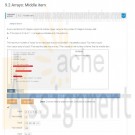
PRG 211 Week 4 Labs
Regular Price: $12.00
Special Price $9.00
PRG 211 Week 4 Labs
Lab 9.1 Output numbers in reverse
Write a program that reads a list of 10 integers, and outputs those integers in reverse. For coding simplicity, follow each output integer by a space, including the last one. Then, output a newline.
Ex: If the input is 2 4 6 8 10 12 14 16 18 20, the output is:
20 18 16 14 12 10 8 6 4 2
To achieve the above, first read the integers into an array. Then output the array in reverse.
Lab 9.2 Middle itemGiven a sorted list of integers, output the middle integer. Assume the number of integers is always odd.
Ex: If the input is 2 3 4 8 11 -1 (a negative indicates end), the output is:
4
The maximum number of inputs for any test case should not exceed 9. If exceeded, output "Too many inputs".Hint: Use an array of size 9. First read the data into an array. Then, based on the number of items, find the middle item.
Lab 9.3 Output values below an amountWrite a program that first gets a list of 5 integers from input. Then, get another value from the input, and output all integers less than or equal to that value.
Ex: If the input is 50 60 140 200 75 100, the output is:
50 60 75
For coding simplicity, follow every output value by a space, including the last one. Then, output a newline.Such functionality is common on sites like Amazon, where a user can filter results.
Learn More -
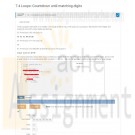
PRG 211 Week 3 Labs
Regular Price: $15.00
Special Price $12.00
PRG 211 Week 3 Labs
Lab 7.1 Loops Convert to binary
Write a program that takes in a positive integer as input, and outputs a string of 1's and 0's representing the integer in binary. For an integer x, the algorithm is:
As long as x is greater than 0
Output x % 2 (remainder is either 0 or 1)
x = x / 2
Note: The above algorithm outputs the 0's and 1's in reverse order.Ex: If the input is 6, the output is:
011
(6 in binary is 110; the algorithm outputs the bits in reverse).
Lab 7.2 Loops Varied amount of input dataStatistics are often calculated with varying amounts of input data. Write a program that takes any number of non-negative integers as input, and outputs the average and max. A negative integer ends the input and is not included in the statistics.
Ex: When the input is 15 20 0 5 -1, the output is:
10 20
You can assume that at least one non-negative integer is input.
Lab 7.3 Loops Output range with increment of 10Write a program whose input is two integers, and whose output is the first integer and subsequent increments of 10 as long as the value is less than or equal to the second integer.
Ex: If the input is -15 30, the output is:
-15 -5 5 15 25Ex: If the second integer is less than the first as in 20 5, the output is:
Second integer can't be less than the first.For coding simplicity, output a space after every integer, including the last.
Lab 7.4 Loops Countdown until matching digitsWrite a program that takes in an integer in the range 20-98 as input. The output is a countdown starting from the integer, and stopping when both output digits are identical.
Ex: If the input is 93, the output is:
93 92 91 90 89 88Ex: If the input is 77, the output is:
77Ex: If the input is not between 20 and 98 (inclusive), the output is:
Input must be 20-98For coding simplicity, follow each output number by a space, even the last one. Use a while loop. Compare the digits; do not write a large if-else for all possible same-digit numbers (11, 22, 33, ..., 88), as that approach would be cumbersome for large ranges.
Learn More -
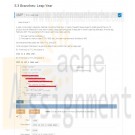
PRG 211 Week 2 Labs
Regular Price: $12.00
Special Price $9.00
Lab 5.1 Largest number
Write a program whose inputs are three integers, and whose output is the largest of the three values.
Ex: If the input is 7 15 3, the output is:
15
Lab 5.2 Remove gray from RGBSummary: Given integer values for red, green, and blue, subtract the gray from each value.
Computers represent color by combining the sub-colors red, green, and blue (rgb). Each sub-color's value can range from 0 to 255. Thus (255, 0, 0) is bright red, (130, 0, 130) is a medium purple, (0, 0, 0) is black, (255, 255, 255) is white, and (40, 40, 40) is a dark gray. (130, 50, 130) is a faded purple, due to the (50, 50, 50) gray part. (In other words, equal amounts of red, green, blue yield gray).
Given values for red, green, and blue, remove the gray part.
Ex: If the input is 130 50 130, the output is:
80 0 80
Find the smallest value, and then subtract it from all three values, thus removing the gray.Note: This page converts rgb values into colors.
Lab 5.3 Leap YearA year in the modern Gregorian Calendar consists of 365 days. In reality, the earth takes longer to rotate around the sun. To account for the difference in time, every 4 years, a leap year takes place. A leap year is when a year has 366 days: An extra day, February 29th. The requirements for a given year to be a leap year are:
1. The year must be divisible by 4
2. If the year is a century year (1700, 1800, etc.), the year must be evenly divisible by 400
Some example leap years are 1600, 1712, and 2016.Write a program that takes in a year and determines whether that year is a leap year.
Ex: If the input is 1712, the output is:
1712 is a leap year.Ex: If the input is 1913, the output is:
Learn More
1913 is not a leap year. -
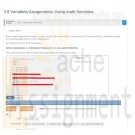
PRG 211 Week 1 Labs
Regular Price: $15.00
Special Price $12.00
Lab 3.1 Formatted Output Hello World!
Write a program the outputs 'Hello World!'
Lab 3.2 Formatted output: No parking sign.Write a program that prints a formatted "No parking" sign. Note the first line has two leading spaces.
NO PARKING
1:00 - 5:00 a.m.
Lab 3.3 House real estate summarySites like Zillow get input about house prices from a database and provide nice summaries for readers. Write a program with two inputs, current price and last month's price (both integers). Then, output a summary listing the price, the change since last month, and the estimated monthly mortgage computed as (currentPrice * 0.045) / 12.
Ex: If the input is 200000 210000, the output is:
This house is $200000. The change is $-10000 since last month.
The estimated monthly mortgage is $750.0.
Note: Getting the precise spacing, punctuation, and newlines exactly right is a key point of this assignment. Such precision is an important part of programming.
Lab 3.4 Caffeine levelsA half-life is the amount of time it takes for a substance or entity to fall to half its original value. Caffeine has a half-life of about 6 hours in humans. Given caffeine amount (in mg) as input, output the caffeine level after 6, 12, and 18 hours.
Ex: If the input is 100, the output is:
After 6 hours: 50.0 mg
After 12 hours: 25.0 mg
After 18 hours: 12.5 mg
Note: A cup of coffee has about 100 mg. A soda has about 40 mg. An "energy" drink (a misnomer) has between 100 mg and 200 mg.
Lab 3.5 Divide by x.Write a program using integers userNum and x as input, and output userNum divided by x four times.
Ex: If the input is 2000 2, the output is:
1000 500 250 125
Note: In Coral, integer division discards fractions. Ex: 6 / 4 is 1 (the 0.5 is discarded).
Lab 3.6 Driving costs.Driving is expensive. Write a program with a car's miles/gallon and gas dollars/gallon (both floats) as input, and output the gas cost for 10 miles, 50 miles, and 400 miles.
Ex: If the input is 20.0 3.1599, the output is:
1.57995 7.89975 63.198
Note: Small expression differences can yield small floating-point output differences due to computer rounding. Ex: (a + b)/3.0 is the same as a/3.0 + b/3.0 but output may differ slightly. Because our system tests programs by comparing output, please obey the following when writing your expression for this problem. First use the dollars/gallon and miles/gallon values to calculate the dollars/mile. Then use the dollars/mile value to determine the cost per 10, 50, and 400 miles.Note: Real per-mile cost would also include maintenance and depreciation.
Lab 3.7 Simple statistics.Part 1
Given 3 integers, output their average and their product, using integer arithmetic.Ex: If the input is 10 20 5, the output is:
11 1000
Note: Integer division discards the fraction. Hence the average of 10 20 5 is output as 11, not 11.666666666666666.Submit the above for grading. Your program will fail the test cases (which is expected), until you complete part 2 below but check that you are getting the correct average and product using integer division.
Part 2
Also output the average and product, using floating-point arithmetic.Ex: If the input is 10 20 5, the output is:
11 1000
11.666666666666666 1000.0
Lab 3.8 Using math functionsGiven three floating-point numbers x, y, and z, output x to the power of y, x to the power of (y to the power of z), the absolute value of x, and the square root of (xy to the power of z).
Ex: If the input is 5.0 6.5 3.2, the output is:
34938.56214843421 1.2995143401732918e+279 5.0 262.42993783925596
Hint: Coral has built-in math functions (discussed elsewhere) that may be used.
Learn More
Function Behavior Example
SquareRoot(x) Square root of x SquareRoot(9.0) evaluates to 3.0.
RaiseToPower(x, y) Raise x to power y: RaiseToPower(6.0, 2.0) evaluates to 36.0.
AbsoluteValue(x) Absolute value of x AbsoluteValue(-99.5) evaluates to 99.5. -

PRG 211 Week 5 Labs
Regular Price: $20.00
Special Price $15.00
PRG 211 Week 5 Labs
Lab 11.1 Miles to track laps
One lap around a standard high-school running track is exactly 0.25 miles. Write a program that takes a number of miles as input, and outputs the number of laps.
Ex: If the input is 1.5, the output is:
6.0Ex: If the input is 2.2, the output is:
8.8Your program should define and call a function:
Function MilesToLaps(float userMiles) returns float userLaps
Lab 11.2 Driving costWrite a function DrivingCost with parameters drivenMiles, milesPerGallon, and dollarsPerGallon, that returns the dollar cost to drive those miles. All items are of type float.
Ex: If the function is called with 50 20.0 3.1599, the function returns 7.89975.
Define that function in a program whose inputs are the car's miles/gallon and the gas dollars/gallon (both floats). Output the gas cost for 10 miles, 50 miles, and 400 miles, by calling your DrivingCost function three times.
Ex: If the input is 20.0 3.1599, the output is:
1.57995 7.89975 63.198Note: Small expression differences can yield small floating-point output differences due to computer rounding. Ex: (a + b)/3.0 is the same as a/3.0 + b/3.0 but output may differ slightly. Because our system tests programs by comparing output, please obey the following when writing your expression for this problem. In the DrivingCost function, use the variables in the following order to calculate the cost: drivenMiles, milesPerGallon, dollarsPerGallon.
Lab 11.3 Step counterA pedometer treats walking 2,000 steps as walking 1 mile. Write a program whose input is the number of steps, and whose output is the miles walked. If the input is 5345, the output is 2.6725.
Your program should define and call a function:
Function StepsToMiles(integer userSteps) returns float numMiles
Lab 11.4 Leap yearA year in the modern Gregorian Calendar consists of 365 days. In reality, the earth takes longer to rotate around the sun. To account for the difference in time, every 4 years, a leap year takes place. A leap year is when a year has 366 days: An extra day, February 29th. The requirements for a given year to be a leap year are:
1) The year must be divisible by 4
2) If the year is a century year (1700, 1800, etc.), the year must be evenly divisible by 400
Some example leap years are 1600, 1712, and 2016.
Write a program that takes in a year and determines whether that year is a leap year. If the input is 1712, the output is: 1712 is a leap year. If the input is 1913, the output is: 1913 is not a leap year.
Your program must define and call a function:
Function OutputLeapYear(integer inputYear) returns nothing
The function should output whether the input year is a leap year or not.
Lab 11.5 Max and min numbersWrite a program whose inputs are three integers, and whose outputs are the largest of the three values and the smallest of the three values. If the input is 7 15 3, the output is:
largest: 15
smallest: 3Your program should define and call two functions:
Function LargestNumber(integer num1, integer num2, integer num3) returns integer largestNum
Function SmallestNumber(integer num1, integer num2, integer num3) returns integer smallestNum
The function LargestNumber should return the largest number of the three input values. The function SmallestNumber should return the smallest number of the three input values.
Lab 11.6 Output values below an amountWrite a program that first gets a list of six integers from input. The first five values are the integer list. The last value is the upper threshold. Then output all integers less than or equal to the threshold value.
Ex: If the input is 50 60 140 200 75 100, the output is:
50 60 75
For coding simplicity, follow every output value by a space, including the last one.Such functionality is common on sites like Amazon, where a user can filter results.
Your program should define and use a function:
Learn More
Function outputIntsLessThanOrEqualToThreshold(integer array(?) userVals, integer upperThreshold) returns nothing -

PRG/211 Week 1 Lab 3.2: Formatted output: No parking sign
Regular Price: $5.00
Special Price $3.00
PRG/211 Week 1 Lab 3.2.1: Formatted output: No parking sign.
Write a program that prints a formatted "No parking" sign. Note the first line has two leading spaces.
Learn More
NO PARKING
1:00 - 5:00 a.m. -
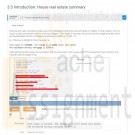
PRG/211 Week 1 Lab 3.3: House real estate summary
Regular Price: $8.00
Special Price $3.00
PRG/211 Week 1 Lab 3.3.1: House real estate summary
Sites like Zillow get input about house prices from a database and provide nice summaries for readers. Write a program with two inputs, current price and last month's price (both integers). Then, output a summary listing the price, the change since last month, and the estimated monthly mortgage computed as (currentPrice * 0.045) / 12.
Ex: If the input is 200000 210000, the output is:
This house is $200000. The change is $-10000 since last month.
Learn More
The estimated monthly mortgage is $750.0.
Note: Getting the precise spacing, punctuation, and newlines exactly right is a key point of this assignment. Such precision is an important part of programming. -
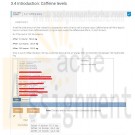
PRG/211 Week 1 Lab 3.4: Caffeine levels
Regular Price: $8.00
Special Price $3.00
PRG/211 Week 1 Lab 3.4.1: Caffeine levels
A half-life is the amount of time it takes for a substance or entity to fall to half its original value. Caffeine has a half-life of about 6 hours in humans. Given caffeine amount (in mg) as input, output the caffeine level after 6, 12, and 18 hours.
Ex: If the input is 100, the output is:
After 6 hours: 50.0 mg
Learn More
After 12 hours: 25.0 mg
After 18 hours: 12.5 mg
Note: A cup of coffee has about 100 mg. A soda has about 40 mg. An "energy" drink (a misnomer) has between 100 mg and 200 mg. -
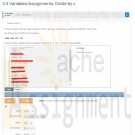
PRG/211 Week 1 Lab 3.5: Divide by x
Regular Price: $8.00
Special Price $3.00
PRG/211 Week 1 Lab 3.5.1: Divide by x.
Write a program using integers userNum and x as input, and output userNum divided by x four times.
Ex: If the input is 2000 2, the output is:
1000 500 250 125
Learn More
Note: In Coral, integer division discards fractions. Ex: 6 / 4 is 1 (the 0.5 is discarded).





